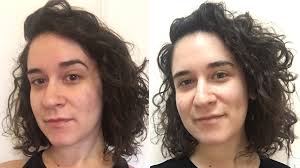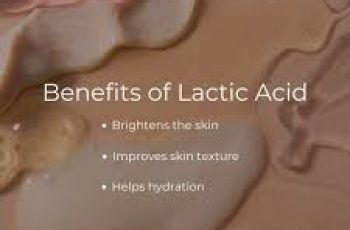
What Happens If You Don’t Pop a Pimple?
Dermatologist usually say “Don’t pop a pimple,” but what will happen if you leave a pimple alone? This article will discuss when to pop and when not to pop a pimple and will tell you what happens if you leave a pimple alone.
No one likes to wake up to a pimple in the middle of their face, and we certainly don’t like the idea of waiting for that pimple to go away on its own. However, the truth is that waiting it out might be best thing you can do to clear a pimple fast.
As a thank you for reading our educational content, use the one-time code “STSBlog20” at checkout for 20% off anything in our store.
Will a Pimple Go Away on Its Own?
Pimples will go away on their own if you do not pop them. Your skin uses its own natural exfoliation process to push the pimple and its contents to the surface.
You can actually see this process, called “purging”, happening when you begin using a retinoid. Purging is the skin pushing the ingredients that are clogging the pores to the skin’s surface.
As the purging process occurs, the pimple will eventually rise to the skin’s surface or the inflammation will go away and the pimple will disappear on its own.
The best way to get a pimple to go away on its own is with the right acne care products. Check out some of these great options:
If you don’t pop a pimple will you get a scab?
Pimples rarely cause scabs if you don’t squeeze them. Scabs happen when the upper layers of the skin are injured by your fingernails or comedone extractors.
If you get a scab, do not pick at the scabs as this can lead to scarring and dark spots on the skin.
Just like when scabs form over a cut on other areas of your body, scabs that form over a pimple will eventually shed off on their own once the skin underneath is healed. This can take 3-12 days. If you pick them it can take longer. Scabs heal faster when left alone or when a topical antibiotic ointment is placed on them.
What are the three kinds of pimples. Different stages of pimples, and when you can pop them.
Three types of pimples: which type can you pop
There are three types of pimples: comedones, papules and pustules. Pustules are ready to be popped, comedones and papules are not. Trying to pop a papule will make acne worse by causing inflammation and tissue damage and maybe even push the pimple contents deeper in the skin.
Whiteheads are also called Comedones
Whiteheads are the earliest stage of pimples. They are clogged pores are not ready to be popped. Apply a retinol on top of them and wait for them to come to the surface. Picking them and popping them can cause a scar or a cyst.
What happens if you do not pop a whitehead?- It comes to the surface and goes away naturally.
Here are some strong retinols to help a whitehead come to the skin’s surface faster. Apply these only to the whitehead because they are very strong and can cause side effects if used on your entire face.
Papules are Early Pimples
Papules are a type of acne lesion characterized by small, red, raised bumps on the skin. Unlike some other types of acne, papules do not contain pus, and their formation is a result of the skin’s inflammatory response to bacteria, oil, and debris within the hair follicle. At this stage, the inflammatory material is dispersed throughout the skin layers, rather than being concentrated in a singular, pus-filled space. This distribution makes papules ill-suited for extraction. The body’s immune system actively works to wall off the invading bacteria and debris, a natural protective mechanism to prevent further spread and damage. Attempting to pop or squeeze a papule can disrupt this natural process, potentially pushing the bacteria and inflammation deeper into the skin and exacerbating the issue.
Pustules are a Later Stage of Pimple
Pustules are distinguishable by white bumps/heads that indicate they are ready to pop. You should pop pimples when they are white pustules, or you can leave them alone to pop on their own.
Pustules, in contrast to papules, are visibly filled with pus and often appear as yellowish or whitish bumps with a defined center. This pus is a mixture of bacterial debris, white blood cells, and dead skin cells. Because pustules have a centralized collection of pus, they can be more amenable to extraction when done correctly and hygienically. However, it’s essential to approach this with caution; while the contents of a pustule are more centralized and can be more easily extracted, improper techniques or doing so prematurely can still result in skin damage or increased risk of infection. Ideally, any extraction should be conducted or guided by a trained professional to minimize complications.
If you must pop the pimple yourself, wait until it has a white head on it (which means it is a pustule) follow these instructions.
Why you should not pop a pimple
Why You Should NOT Pop a Pimple
As tempting as it might be to pop pimples as soon as you can see them on the surface, doing so can make matters worse. Here are the main reasons NOT to pop a pimple and let them resolve on their own. Popping a pimple can:
Make it last longer, by pushing bacteria and the contents of the pimple deeper into your skin.
Cause an acne cyst by pushing the contents deeper
Cause scars. It is a myth that pimples are more likely to scar if you don’t pop them. When you leave pimples alone, there is less inflammation and less of a chance of pushing the pimple’s contents deeper.
Lead to a skin infection. Fingernails are very dirty! It is common to cause a skin infection when you scratch off pimples or pop them.
natural ingredients for acne prone skin
What Skincare Should I Use to Get Rid of Pimples?
Retinoids are a common acne treatment ingredient because they speed up the skin’s natural exfoliation process, causing pimples and their contents to come to the surface faster. Retinoids also stimulate collagen, helping your skin to repair itself more efficiently and minimizing the formation of acne scars.
Salicylic acid is another common acne-fighting ingredient, thanks to its anti-inflammatory, antibacterial, and exfoliating properties. You can use a salicylic acid cleanser to help acne clear on its own.
Other antibacterial ingredients such as benzoyl peroxide and colloidal silver can be helpful when treating acne because they kill acne-causing bacteria on the skin.
There are acne treatment products you can put on pimple to make it go away faster such as Murad Outsmart Acne Clarifying Treatment.
Use these acne spot treatments 2 times a day.
Bottom Line
Don’t pop a pimple unless it is a pustule. Papules will eventually go away on their own. Popping pimples and picking at acne scabs can cause scarring and slow the healing process. Papules will go away much faster if you do not pop them or pick at them.
The best way to stop getting pimples is to only use products that are right for your Baumann Skin Type.
Take the quiz and we will give you advice on what products are best to prevent getting papules and pustules on your skin.


